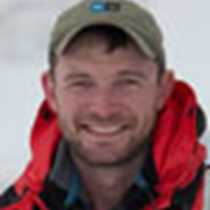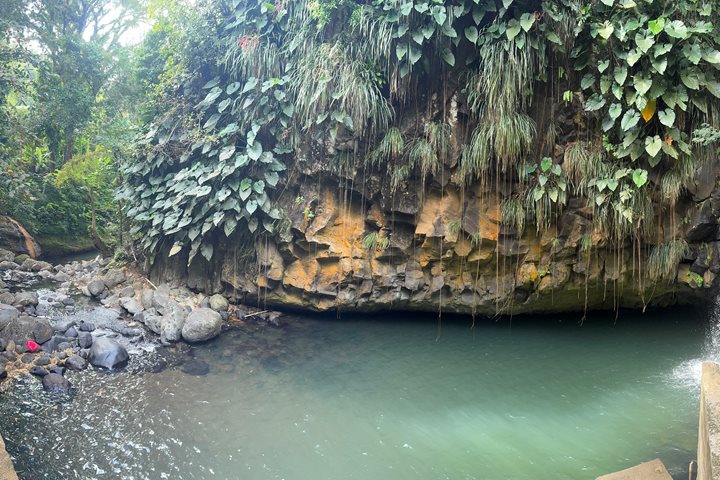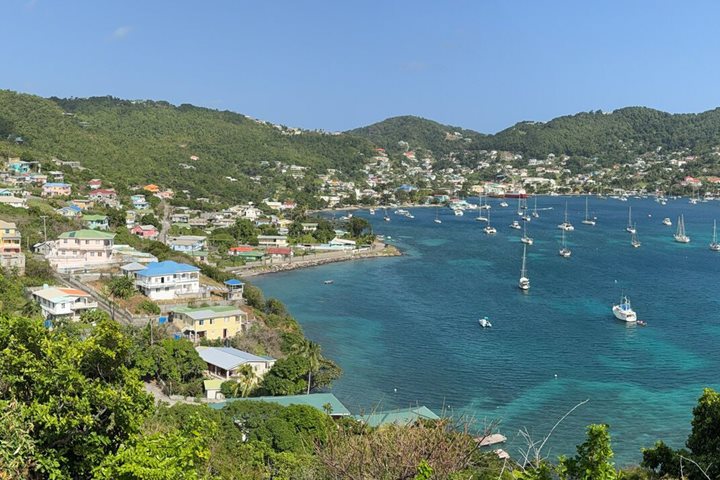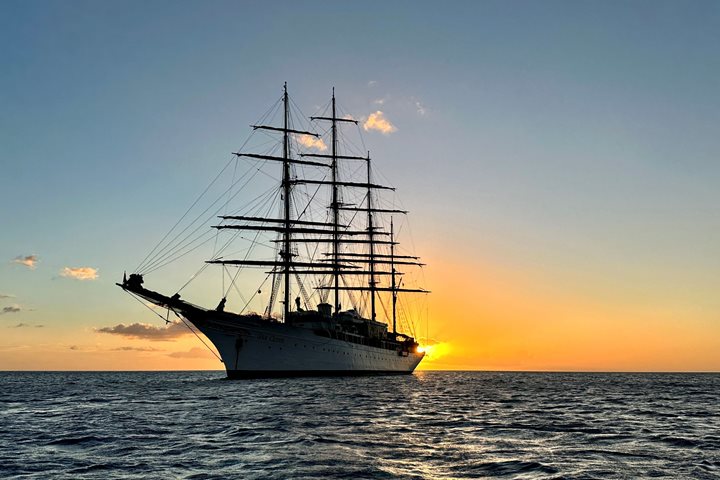Welcome to France. Sun rise over the north west of Dominica at 6:06 a.m. and we dropped our anchor in Iles des Saintes at 7:09. This small archipelago of seven islands is a dependency of Guadalupe and is a distinct region of France and is “Départment of d’Outré Mer.” It has the same relationship to France as Hawaii has to the US. The inhabitants are French citizens, vote in all elections, and have all the perquisites of being French citizen and a member of the European Union. As such the official currency here is the Euro. And the shops are not inexpensive but have beautiful goods. I saw many of our guests at the lovely shop “Mahagony”—famous for its indigo blue clothing and panama hats. Bourg’s two most imposing buildings are a lovely Catholic Church (The Assumption) and the town hall, proclaiming “Liberté, Egalité and Fraternité”—ideals which emerged from the French Revolution.
We were anchored in the bay in from of “Bourg” (City) on the isle of “Terre Haut” (High Ground). There is nothing like a little literalism as an anecdote to complexity. The original 18th century French settlers were indentured servants, chiefly from Brittany. After having secured their freedom from their indenture they became fisherman and boat builders. Today the primary industry is tourism from the larger island of Guadalupe. The red roofs and the pastel colored houses were beautiful and a strong contrast with homes on Dominica.
We disembarked after breakfast at 8:30 and went with Tom Heffernan to the top of the closest mountain to visit the Fort Napoleon, built between 1841 and 1867 by Napoleon III. Napoleon was the nephew of the great Napoleon and had grandiose plans for France but was defeated by Bismarck and his Prussian forces and died in exile in England in 1873. Some of our hardy in the group chose to walk up to the fort and while it is not far—it takes about 30 minutes—it is mostly uphill. However, the faint of heart, yours truly among them, took taxis. The fort is today chiefly a botanical garden with a representative species of flowering trees on the Lesser Antilles, bur chiefly cacti. We also saw four large land iguanas, the largest of which was about 5’.
Fort Napoleon contains an ethnographic museum detailing the pre-Columbian history of the islands and a number of rooms devoted to the local craft of shipbuilding. Of particular interest is the very important Battle of the Saints (April 12, 1782), where Admiral George Rodney (1718-92) of his Majesty’s Government defeated Admiral Comte de Grasse, the leader of the opposing French forces. The battle took place in these waters, just north of Dominica, and was a rout for the Franco-Spanish fleet that was seeking to capture the British island of Jamaica. Jim Webster made the point that the US Navy commissioned a destroyer the US Comte de Grasse (563’ long with 290 men and 20 officers) in 1978, which remained in service for 25 years.
After our visit to the Fort we took taxis down to the city and spend the rest of the morning freely wandering in and out of the colorful shops shopping. Some of our group went snorkeling at an adjoining island called “the Goat” and from what I heard the fish were colorful and abundant. Lunch was on board, the sails went up at approximately 2:00, and we were sailing along at almost 6.8 knots by 3:30 p.m. with a nice fresh wind. Susan gave a nice illustrated lecture of her photographic work in Barbados in 2010. We took in the sails at 5:00 p.m. and at 6:15 p.m. Tom O’Brien gave a very informative and lively talk on the pre-history and history of the Sea Cloud from its birth in 1931 to its present incarnation.
Tonight was a special night as it was our opportunity to visit the original cabins of the Post-Hutton era. It really is a misnomer to refer to them as “cabins” since the have functioning fireplaces as well as massive marble bathtubs and gold fixtures. All of this was followed by a scrumptious dinner.









